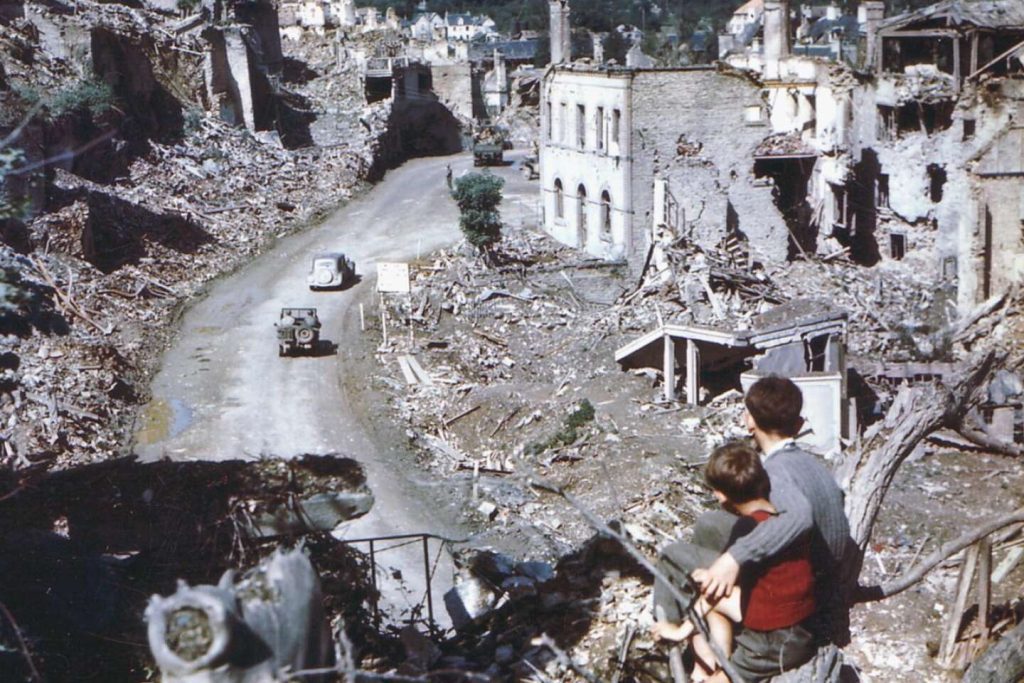In Saint-Lô, 13-year-old Max and 9-year-old Jean Robin observe the passage of an American Jeep on the ruins of the castle walls. Their father, Raymond Robin, a member of the French Resistance, was executed by the Germans on June 15, 1944 in Beaucoudray. The Liberation of France was a time of celebration and joy, with images of American GIs distributing cigarettes and gum, receiving flowers and hugs from cheering crowds waving Allied flags. However, in some areas of Normandy, the Liberation was accompanied by a sense of loss and destruction, as the Allies only found smoking ruins. The American presence stretched on until the winter of 1945, leaving behind a mixed memory for the Normandy population.
The celebration of the heroism of the Allied liberators became an imperative in the context of the Cold War, with a duty of remembrance that translated into gratitude. However, in the past decade, there has been a shift towards acknowledging the silent suffering of the Normandy population during the wartime period. The creation of a civilian memorial in Falaise in 2016 marked a significant step in recognizing the hardships faced by civilians during the war, particularly the impact of bombardments. Led by Emmanuel Thiébot, the memorial showcases the lives of civilians and the trials they endured during the war, offering a perspective that has long been overlooked.
While other regions in France also suffered heavily during the war, such as the Nord-Pas-de-Calais or the Parisian region, Normandy held strategic significance due to its proximity to England and the presence of the Atlantic Wall constructed by the Germans. The Allies began preparations for the D-Day Landings in 1944, targeting transportation networks to disrupt German reinforcements. This led to devastating bombings in urban areas like Sotteville-lès-Rouen, where 812 people were killed, and Rouen experienced a “Red Week” of bombings causing hundreds of casualties. The city of Caen also faced heavy losses, with six hundred deaths on June 6 and another three hundred on July 7.
Despite the heavy toll on civilian lives during the war, the suffering of the Normandy population has often been overshadowed by the focus on military operations and victories. The creation of memorials and initiatives to honor civilian victims, such as the one in Falaise, represent a gradual shift towards recognizing the human cost of war. The memory of those who endured hardships and loss during the conflict is slowly being brought to the forefront, providing a more comprehensive and balanced perspective on the impact of World War II on all aspects of society. The legacy of the war continues to shape the collective memory of the Normandy region and the experiences of its inhabitants during this tumultuous period in history.


